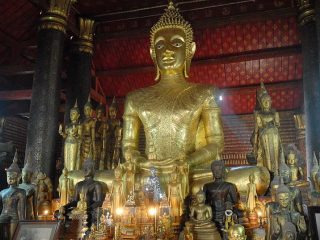Gardens have remained an important aspect of Chinese history. According to a saying that has passed on for generations “‘the garden is an artistic recreation of nature; a landscape painting in three dimensions”. This ideology has been carried on for centuries where when visiting the gardens in china, one can see the elements of paintings and landscaping perfectly mingling with nature.
Blending these two important elements of landscaping and paintings, the artistic creation of Chinese gardens also includes a combination of poetry. These so called “poetic gardens” was designed to attain harmony and balance deemed essential to life. Providing a spiritual utopia, the gardens are created with varied groupings of artificial elements and natural elements. It has been planned so that the visitors can connect with the wonders of nature, reaching to one’s inner being by spreading the knowledge of their ancient idealism of nature.
Most Chinese Gardens are divided into three areas; the imperial garden, the natural scenic site and the private garden. Regarded as a pearl among the Chinese gardens, Liyuan Garden is one of its most famous private gardens. It includes the perfect brew of water, rocks, flourishing trees and vibrant flora to paintings, intricate architecture and poetry.
Creating a balance and harmony between man and nature, the garden is located on the shore of Lihi Lake. The lake scenery extends to all three sides of the garden, where at a distance you can see the lush green hills. Covering an area of 8.2 hectares, the landscaping style includes salient features common to most private gardens. Capturing the charming beauty of the nature of hills and ponds, there is a stone footpath, designed almost like a maze. Best visited in the spring or autumn, the path is wide in some areas, narrow in others and bright in some parts, obscure in others.
A stunning beauty with its pavilions, corridors and rockery; according to legend it was built in the early 20th century. Exquisitely designed, there is a winding corridor reaching to about 1000 meters through the park. Sauntering along the way, one can see the ancient inscriptions on the walls, in the form of calligraphy, making the garden rich in traditional Chinese culture. Buildings in the garden include a huge archways and bridges.
Merging with the landscape, the Four Seasons Pavilion is another wonderful addition to the garden. Each of the pavilions is dedicated to the seasons; spring, summer, autumn and winter. Built in the same style, the visitors can enjoy the luster and the beauty of the flowers planted beside each pavilion that captures the essence of the season.
Inherited in this garden is the revered artistic work. Large scale paintings of color, porcelain figurines, elegant clay carvings, printed murals and golden lacquer woodcarving can be seen. The splendid architecture of exquisite craftsmanship is regarded as the zenith of perfection.
Providing much food for thought, this Chinese garden is spiritual shelter for people. This is the ideal place for those who are interested for an escape from their social lives. If you are searching for a hotel nearby, there are many Wuxi hotel options to choose from. Millennium Wuxi is one such hotel Wuxi has to offer. Located in the New District area, it is amidst landscaped gardens, which creates a perfect haven.




